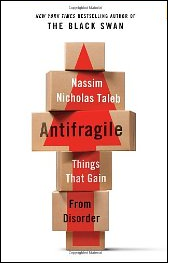Steven R. Southard's Blog, page 46
April 29, 2018
Suffering for Your Writing
You’ve heard the phrase “suffering for your art,” and you know the stereotype of the writer who’s deeply disturbed and probably insane. Let’s reason this out together.
First, I’d like to define some terms. Suffering means simply to experience something undesirable, some hardship. Given that definition of suffering, it’s something no human escapes. We all have undesirable experiences. Suffering is universal and inevitable.
An insane person is one who does not exhibit normal perception, behavio...
April 21, 2018
12 Types of Combination Stories
The reading public raved about your book. Readers loved the characters, the setting, everything, and they’re asking for more. More? Yes, more novels with those characters in that world you created.
What can you do? You could start a series, and I have a dozen suggestions on how to do that.
This ‘problem’ happened to Homer in ancient Greece. The Iliad was popular, and fans demanded more. So he wrote the Odyssey, very likely the first sequel in history.
But straight sequels aren’t the only type...
April 15, 2018
Your Antifragile Hero
Is the protagonist of your story antifragile? Should she be?
I wrote an earlier post on ‘antifragility,’ but there I applied the term to stories themselves. Today we apply it to heroes/protagonists/main characters.
 Here’s a brief introduction to antifragility. In his book Antifragile, Things That Gain From Disorder, Nassim Nicholas Taleb sought an antonym of the word “fragile.” He didn’t mean words like ‘resilient,’ ‘tough,’ or ‘robust,’ which refer to sustaining shocks without damage. He wan...
Here’s a brief introduction to antifragility. In his book Antifragile, Things That Gain From Disorder, Nassim Nicholas Taleb sought an antonym of the word “fragile.” He didn’t mean words like ‘resilient,’ ‘tough,’ or ‘robust,’ which refer to sustaining shocks without damage. He wan...
April 8, 2018
How to Write When You’re Not Writing
This post’s title sounds kind of Zen, doesn’t it? What does it mean to write when you’re not writing?
 Let’s say you’d like to be a writer, or a more prolific writer. The trouble is time. There’s not enough of it in your day. The rest of life sucks up too much time. Just when you find yourself with a few free minutes to write, the words won’t flow, or you’re too exhausted.
Let’s say you’d like to be a writer, or a more prolific writer. The trouble is time. There’s not enough of it in your day. The rest of life sucks up too much time. Just when you find yourself with a few free minutes to write, the words won’t flow, or you’re too exhausted.
What if you could get some writing done during the rest of the day when you’re not writing? Moreover, what if I told you t...
April 1, 2018
Writing by Number, Part II
Are you the type of writer who measures progress through word counts? If so, here’s today’s question: how do you measure your progress in the second draft?
I first explored the metrics of writing in this post, but I was thinking of first drafts as I wrote it.
It’s easy to measure progress on your first draft. The manuscript was x words long at the end of yesterday, and y words long at the end of today; therefore, today’s word count is y – x. Any word processor can count those for you. There a...
March 25, 2018
4 Strategies for Coping with a Distracted Muse
Your muse gives you a great story idea. You just started writing the story and your muse arrives again and whispers about a second, completely different, story. “But I’m not done with the first one,” you say. Actually, forget both of those,” the muse says, “I’ve got a third story for you…”
 Your muse, like all of them, isn’t the most focused entity around. Easily distracted by new and shiny objects, she comes up with fresh ideas all the time.
Your muse, like all of them, isn’t the most focused entity around. Easily distracted by new and shiny objects, she comes up with fresh ideas all the time.
However, she never sticks around to help write the...
March 18, 2018
Sense, or the Censor?
Say someone just changed the words of your book because they were offended. Whether you call it censorship, expurgation, bowdlerization, or comstockery, this practice always seems so wrong…to authors. Is it ever the right thing to do?
 Allow me to define what I mean by censorship. It’s the deliberate alteration of text, without the author’s permission, to make the story less offensive to the censor. This is not what a normal editor does. Editors collaborate with authors to correct errors, to m...
Allow me to define what I mean by censorship. It’s the deliberate alteration of text, without the author’s permission, to make the story less offensive to the censor. This is not what a normal editor does. Editors collaborate with authors to correct errors, to m...
March 4, 2018
What’s Silkpunk?
You thought this blog-post was the last word on the various ‘punk’ subgenres? Wrong. Meet the new member of the punk family: Silkpunk.

Author Ken Liu invented the term Silkpunk to describe the genre of his latest novel, The Grace of Kings. In this post, he defined silkpunk as “…a blend of science fiction and fantasy…[drawing] inspiration from classical East Asian antiquity. My novel is filled with technologies like soaring battle kites that lift duelists into the air, bamboo-and-silk airship...
February 25, 2018
The Inspiration/Perspiration Ratio
One of inventor Thomas Edison’s most famous quotes is, “Genius is one percent inspiration, ninety-nine percent perspiration.” There may be a similar ratio involved with writing fiction, too. Let’s find out what it is.
I got the idea for this post while reading a wonderful guest post by author Anthony St. Clair on Joanna Penn’s website. St. Clair takes the extreme view that a writer should forget the muse and just show up for work and produce prose.
For discussion’s sake, let’s postulate two p...
February 11, 2018
When Submarines Were New
Ever wonder what it must have been like to serve on a submarine in World War I? You can’t visit or tour one, since there are no U.S. subs from that war on display. You may have seen and walked through a WW II sub in a museum, or seen one in a movie, but the earlier WW I subs are a mystery to most of us.
Recently, one of my wife’s relatives loaned me the journal of her grandfather, a submariner in WW I. I eagerly read it, and now offer you the following description.

Submarine L-10 (SS-50)
Chie...



